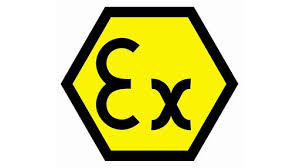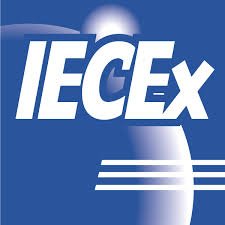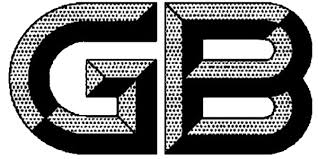
Introduction to Explosion-Proof Crane Standards
We understand that selecting the appropriate explosion-proof certification for overhead cranes and hoists is critical for operational safety in hazardous environments. As a leading industrial crane manufacturer with decades of experience serving global markets, we recognize that compliance with the correct explosion-proof standards isn’t merely regulatory—it’s fundamental to protecting personnel, assets, and productivity. This comprehensive guide examines the three primary explosion-proof certification systems: ATEX (European), IECEx (International), and GB (Chinese) standards, providing detailed technical comparisons to inform your equipment selection process.
Understanding Explosion-Proof Certification Fundamentals
Explosion-proof certification represents a systematic approach to equipment design that prevents ignition in hazardous atmospheres containing flammable gases, vapors, or combustible dust. These standards mandate specific engineering controls, material selections, and testing protocols to ensure that electrical and mechanical components cannot generate sparks, arcs, or excessive temperatures that might trigger explosions. For ponts roulants and hoists operating in sectors like chemical processing, oil and gas, mining, and pharmaceutical manufacturing, compliance with these standards is non-negotiable for operational safety.
Hazardous Area Classification Systems
Zone 0: Explosive atmosphere continuously present or for long periods Zone 1: Explosive atmosphere likely during normal operations Zone 2: Explosive atmosphere unlikely under normal conditions
Zone 20: Combustible dust continuously present Zone 21: Combustible dust likely during normal operations Zone 22: Combustible dust unlikely under normal conditions
ATEX Standards: European Directive 2014/34/EU
Regulatory Framework and Scope

Equipment Categories and Protection Levels
Protection methods: Ex ia (intrinsic safety), Ex ma (encapsulation) Required safety factors: Dual redundancy or reinforced safety measures
Protection methods: Ex d (flameproof), Ex e (increased safety), Ex ib (intrinsic safety) Comprehensive documentation including technical construction file
Protection methods: Ex n (non-sparking), Ex ec (increased safety) Simplified conformity assessment procedure
ATEX Certification Process
Temperature rise testing to verify surface temperatures remain below ignition points Impact testing to ensure enclosure integrity under mechanical stress Ingress protection testing (minimum IP54 for electrical equipment) Spark ignition testing for non-metallic materials
IECEx Certification: International Standardization
Global Recognition and Acceptance

Key Technical Requirements
Group I: Mining applications (methane environments) Group II: Surface industries (various gas classifications)
T1: 450°C maximum T6: 85°C maximum (most stringent)
IIC: Hydrogen, acetylene (most volatile) IIB: Ethylene IIA: Propane
IECEx Certification Advantages
The IECEx system offers significant advantages for international operations: Single certification accepted across multiple countries Streamlined documentation requirements through IECEx Quality Assessment System Reduced testing redundancies through mutual recognition agreements Integrated personnel competence certification (IECEx Certification of Personnel Competence)
GB Standards: China's Regulatory Framework
Chinese National Standards Overview

GB Standard Classification System
Ga/Da: Very high protection (equivalent to Zone 0/20) Gb/Db: High protection (equivalent to Zone 1/21) Gc/Dc: Enhanced protection (equivalent to Zone 2/22)
Ex symbol Protection type (d, e, i, etc.) Equipment category (I, II, III) Temperature class Equipment protection level
GB Certification Process
Type testing by designated Chinese laboratories Factory audits by SAMR-approved inspectors Sample testing for each product category Annual follow-up audits to maintain certification
Comparative Analysis: ATEX vs IECEx vs GB Standards
Geographic Applicability and Market Access
| Aspect | ATEX (EU) | IECEx (Global) | China’s GB Standards |
|---|---|---|---|
| Scope | Applies to equipment used in potentially explosive atmospheres within the European Union. | International certification system recognized in over 30 countries worldwide. | National standard for explosion-proof equipment used in China’s domestic industries. |
| Regulatory Authority | European Commission and authorized Notified Bodies. | International Electrotechnical Commission (IEC) through approved Certification Bodies (ExCBs). | State Administration for Market Regulation (SAMR) and CNEx Certification Center. |
| Hazardous Area Classification | Zones 0, 1, 2 (Gases); Zones 20, 21, 22 (Dusts). | Zones 0, 1, 2 (Gases); Zones 20, 21, 22 (Dusts). | Zones 0, 1, 2 (Gases); Zones 20, 21, 22 (Dusts). |
| Protection Methods | Ex d (Flameproof), Ex i (Intrinsic Safety), Ex e (Increased Safety), Ex m, Ex t. | Ex d, Ex i, Ex e, Ex m, Ex tb (Dust-tight), Ex p (Pressurization). | Ex d, Ex i, Ex e, Ex n — adapted for humidity and high-temperature conditions. |
| Certification Process | Testing by EU Notified Bodies; CE and “Ex” marking mandatory. | Tested by IECEx-approved laboratories; IECEx Certificate of Conformity issued. | Testing by authorized Chinese laboratories; CNEx certification required. |
| Recognition | Valid across the EU; partial recognition internationally. | Globally recognized across member economies without re-testing. | Mandatory in China; limited recognition outside China. |
| Personnel Certification | Not required under ATEX. | Required under IECEx Personnel Competency Scheme (IECEx 05). | Not required; focuses on product certification. |
| Marking Example | Ex II 2G IIB T4 (for gas atmospheres). | Ex d IIC T4 Gb (for global conformity). | Ex d IIC T4 Gb (CNEx certified for Chinese use). |
| Primary Industries | Oil & Gas, Chemical, Marine, and Power Plants within the EU. | Mining, Energy, and Global Petrochemical Projects. | Refineries, Mining, Steel, and Manufacturing within China. |
Regulatory Framework and Scope
Technical Requirements Comparison
Certification Timeline and Cost Considerations
Typical duration: 8-12 weeks Cost factors: Notified Body fees, technical documentation preparation Market advantage: Essential for EU market access
Typical duration: 6-10 weeks Cost factors: Testing laboratory fees, international documentation Market advantage: Streamlined global acceptance
Typical duration: 10-16 weeks Cost factors: Local testing requirements, translation services Market advantage: Mandatory for Chinese market entry
Selection Criteria for Explosion-Proof Cranes
Operational Environment Assessment
Specific flammable substances present (gas group classification) Dust properties and concentration levels Environmental factors (temperature, humidity, corrosion potential)
Operational Parameters
Crane duty cycle and utilization frequency Maintenance accessibility and intervals Emergency response protocols and evacuation routes
Regulatory Compliance Requirements
- Local Regulations: Mandatory compliance with regional standards where equipment will be installed
- Future Expansion: Anticipated operational territories requiring additional certifications
- Industry-Specific Requirements: Sector-specific regulations (e.g., petroleum, chemical, pharmaceutical)
Technical Compatibility Factors
- Electrical Systems: Voltage, frequency, and protection system compatibility
- Control Interfaces: Integration with existing automation and safety systems
- Physical Dimensions: Spatial constraints and installation requirements
Integration in Real-World Crane Applications
Explosion-proof cranes are indispensable across sectors such as:
Petrochemical refineries (ATEX): 50 t double-girder cranes handle pressurized reactors.
Mining operations (IECEx): Underground hoists with Ex i controls manage methane-laden shafts.
Steel and cement plants (GB): Gantry cranes with Ex tb dust protection ensure safe bulk handling.
KRC’s field-proven systems—like its European-style overhead cranes et customized industrial winches—are adaptable to any hazardous environment, ensuring global compliance and operational reliability.
Future Trends in Explosion-Proof Standards
Harmonization Initiatives
International standards organizations are working toward greater harmonization between ATEX, IECEx, and GB standards. We actively participate in these initiatives through industry working groups, ensuring our equipment designs anticipate evolving regulatory requirements. The International Organization for Standardization (ISO) publishes regularly updated safety standards relevant to crane manufacturers.
